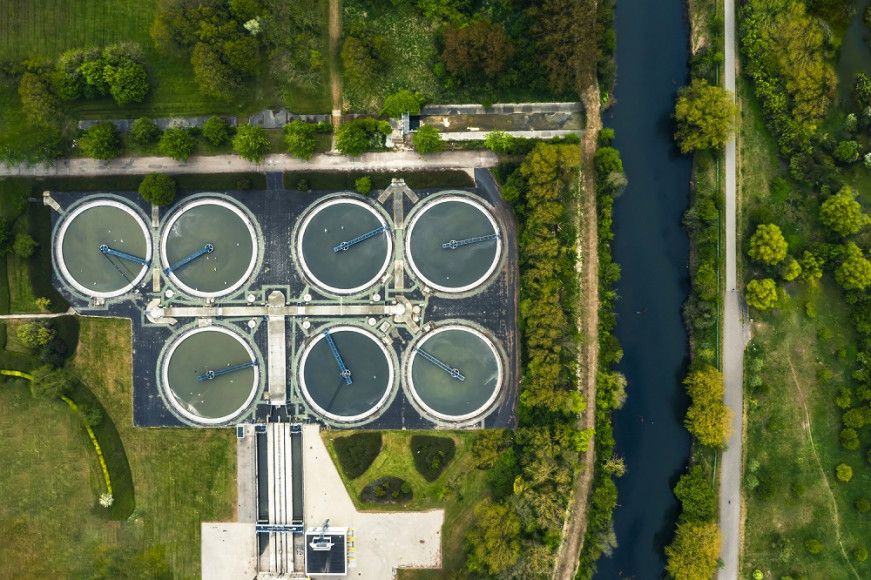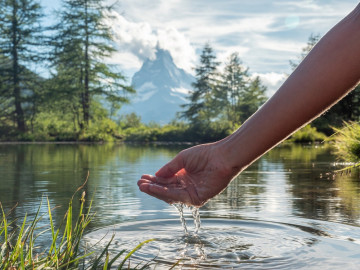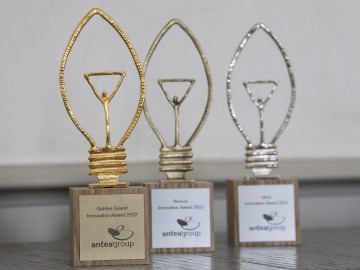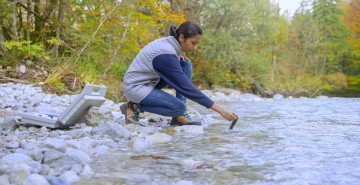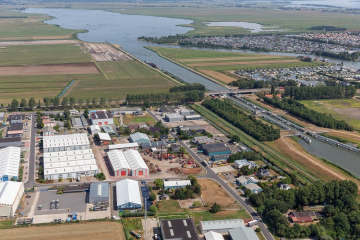A study found rainwater contained levels of the class of chemicals known as PFAS (per- and polyfluoroalkyl substances) deemed out of bounds per safety guidelines published by the Environmental Protection Agency (EPA) and other global organizations.
Ian Cousins, the lead author of the study and professor at the Department of Environmental Science, Stockholm University, concluded, “Based on the latest U.S. guidelines for PFOA and PFOS in drinking water, rainwater everywhere would be judged unsafe to drink.”
Corporations must review their use and disposal of PFAS as new reporting requirements take effect and risk of litigation increases.
To help you gain a better understanding of corporate responsibility around PFAS, we’ll explain how these chemicals enter the drinking water supply, what is involved in testing for PFAS, and offer insight into what is being done to mitigate existing contamination and prevent further harm to the water supply.
PFAS in the Water Supply
Rainwater feeds many of the world’s municipal and unconfined groundwater supplies. Since PFAS has entered the water cycle, an increasing number of municipalities are now grappling with how to mitigate PFAS in their drinking water.
Private wells and municipal water supplies
In industrialized countries, drinking water is primarily sourced in one of two ways: private wells and municipal water supplies.
Private wells draw water from aquifers beneath the ground. When water is drawn from an unconfined source, that means water and contaminants from the surface can seep into the water supply.
Wells that draw from confined water sources tap into aquifers beyond an impermeable layer of earth where surface water and pollutants cannot reach the water supply.
Municipal water is typically drawn from either groundwater or surface water. Because municipalities have infrastructure for decontaminating drinking water, they can make use of surface water, despite the increased risk of contamination from direct pollution and surface runoff.
Private wells are not subject to the same regulatory oversight as municipal water supplies.
Testing for PFAS
In the United States, the Safe Drinking Water Act (SDWA) ensures the safety and drinkability of municipally sourced water supplies in the United States. In 2023, the EPA proposed drinking water standards that limit types of PFAS to a certain part per trillion.
The UCMR (unregulated contaminant monitoring rule) lays out requirements for testing of drinking water systems. As an amendment to the SDWA in 1996, this rule sets guidelines for:
- The establishment of a program to monitor unregulated contaminants in drinking water, to be renewed every five years
- The monitoring of all large water systems serving more than 10,000 people
- The monitoring of all small public water systems (PWS) serving between 3,300 and 10,000 people
- The storing of analytical results in a National Contaminant Occurrence Database (NCOD)
UCMR-5 was adopted in December of 2021 and requires the monitoring of 29 PFAS chemicals.
In addition, the Contaminant Candidate List 5 (CCL 5) for drinking water includes contaminants that are not currently under regulation, but are known to be found in public water systems. That means they could be regulated in the future under the SDWA. The CCL 5 will be for the entire class of PFAS and not just individual PFAS compounds. In fact, according to the EPA’s website, this list, which was finalized on November 14, 2022, “includes 66 chemicals, three chemical groups (per- and polyfluoroalkyl substances (PFAS), cyanotoxins, and disinfection byproducts (DBPs)), and 12 microbes, which were selected from a universe of chemicals used in commerce, pesticides, biological toxins, disinfection byproducts, and waterborne pathogens.”
Treatment for PFAS
Current water treatment plant infrastructure is inadequate for the removal of PFAS from the water supply. According to a geological survey by the Environmental Working Group, more than a million Americans are drinking water contaminated with these PFAS chemicals.
However, new technologies are being developed, tested, and implemented at sites with the most urgent PFAS contaminations.
The 2022 Bipartisan Infrastructure Law includes funding to aid affected communities in upgrading their water treatment systems as these technologies become more widely available.
The human cost of inaction
While there are thousands of chemicals classified as PFAS, a handful have been linked to potentially serious health consequences. The presence of these PFAS chemicals in water supplies has led to a number of emergency situations in communities served both by private wells and municipal water supply.
Since the study of health effects linked with PFAS is still relatively new, the full impact of these chemicals on the human body has yet to be realized.
Action Steps You Can Take to Safeguard the Water Supply
Beyond the risk of litigation from individuals and communities adversely affected by PFAS contamination, corporations that do not take responsibility for their role in these situations risk severe and long-term damage to their brand.
Proactive engagement in PFAS education, risk assessment, and remediation is the best way to approach PFAS contamination.
These are the steps we recommend.
1. Learn about the risks
While this post offers a primer on how PFAS impacts drinking water supplies, there is a lot more to learn about PFAS and associated business risks.
Additional resources available from Antea Group include:
- An FAQ on PFAS: Definition, Sources, Benefits and Risks
- What’s Your PFAS Risk Level? Not Knowing Could Be Costly
- The Top 4 Actions to Take Regarding PFAS
2. Screen your business for risk
With an increase in regulations regarding the use and disposal of PFAS chemicals, due diligence is a must.
It is not only the manufacturers of PFAS who are at risk of contaminating drinking water supplies. Your organization may be exposed to PFAS risk through manufacturing processes or within your supply chain.
A PFAS Screening Tool can help you identify industries associated with potential PFAS use, identify specific PFAS associated with that industry and determine reporting requirements for regulatory compliance.
Learn more about Antea Group’s PFAS Screening Tool
3. Stay informed
Make sure you turn to trusted sources to stay up-to-date on changes to regulations and other significant announcements around PFAS use, disposal, and remediation.
Antea Group offers occasional informational webinars on the topic of PFAS. Our most recent PFAS webinar offered information about changes to PFAS regulations as well as an action plan guide.
The webinar is available to view on-demand: The PFAS Risk Game – Are You on Offense or Defense?
Learn more about Antea Group’s PFAS Management Support
Want more news and insights like this?
Sign up for our monthly e-newsletter, The New Leaf. Our goal is to keep you updated, educated, and even a bit entertained as it relates to all things EHS and sustainability.
Have any questions?
Contact us to discuss your environment, health, safety, and sustainability needs today.


